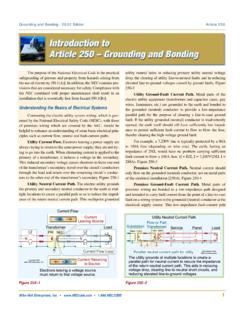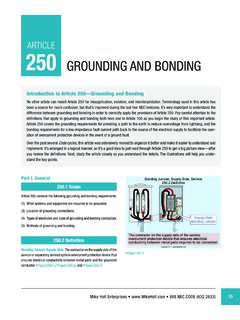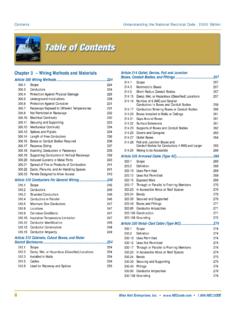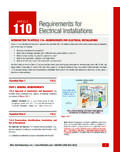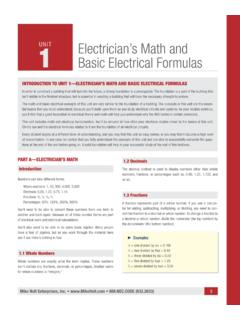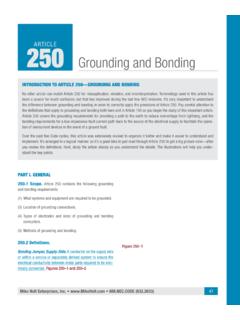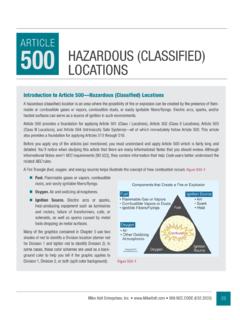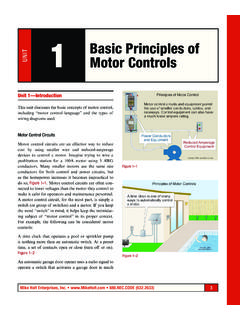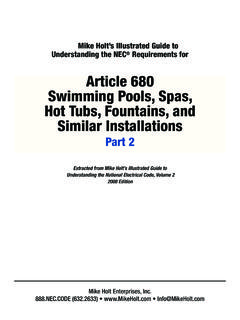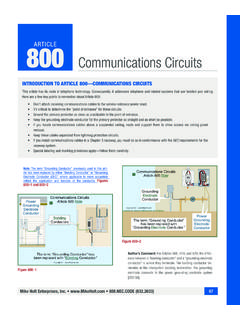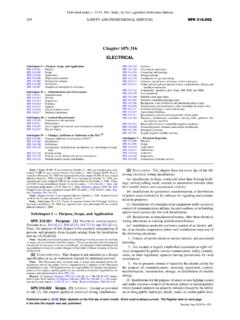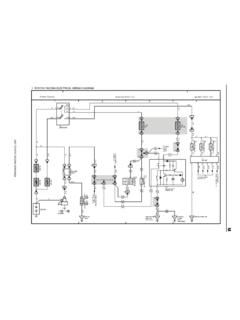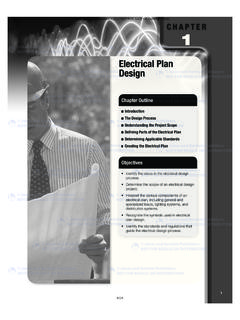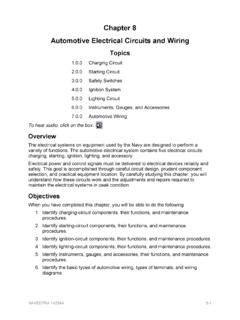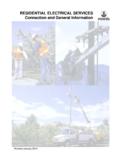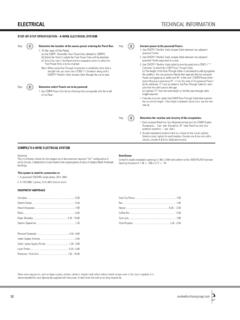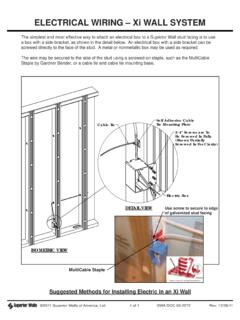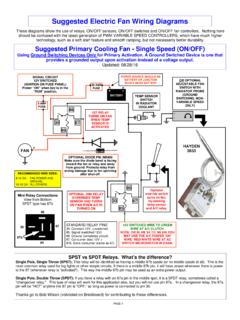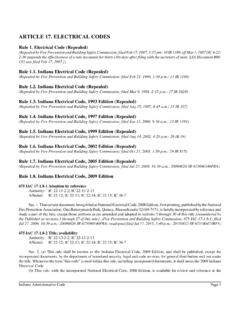Transcription of CHAPTER METHODS AND MATERIALS - Your Electrical …
1 Mike Holt Enterprises, Inc. ( )99 CHAPTER3 wiring METHODS AND MATERIALSINTRODUCTION TO CHAPTER 3 wiring METHODS AND MATERIALSC hapter 2 provided the general rules for wiring and protection of conductors, and was primarily concerned with the correct sizing of circuits and the means of protecting them. This differs from the purpose of CHAPTER 3, which is to correctly install the conductors that make up those 2 was a bit of an uphill climb, because many rules had a kind of abstract quality to them. CHAPTER 3, on the other hand, gets very specifi c about conductors, cables, boxes, raceways, and fi ttings. It s also highly detailed about the installation and restrictions involved with wiring s because of that detail that many people incorrectly apply the CHAPTER 3 wiring METHODS rules. Be sure to pay careful atten-tion to the details, rather than making the mistake of glossing over something.
2 This is especially true when it comes to apply-ing the type of wiring method you ll use depends on several factors: Code requirements, the environment, need, and cost are among quality is a major concern today. The cost of poor power quality runs into the millions of dollars each month in the United States alone. Grounding and bonding defi ciencies (refer back to Article 250) constitute the number one cause of power quality problems. Violations of the CHAPTER 3 wiring METHODS rules constitute the number two cause of power quality prob-lems. Code violations can also lead to fi re, shock, and other hazards. This is particularly true of CHAPTER 3 3 is really a modular assembly of articles, each detailing a specifi c area of an Electrical installation. It starts with wiring METHODS [Article 300], covers conductors [Article 310], and then enclosures [Articles 312 and 314].
3 The next series [Articles 320 through 340] addresses specifi c types of cables, with Articles 342 through 390 covering specifi c types of race-ways. We close with Article 392, a support system, and the last string [Articles 394 through 398] for open as you read through the various wiring METHODS that, for the most part, the section numbering remains the same in each article. This makes it very easy to locate specifi c requirements in a particular article. For example, the rules for securing and supporting can be found in of each article. In addition to this, you ll fi nd a uses permitted and uses not permit-ted section in nearly every Method Articles Article 300. wiring METHODS . Article 300 contains the general requirements for all wiring METHODS included in the NEC, except for signaling and communications systems, which are covered in Chapters 7 and 3 wiring METHODS and Materials100 Mike Holt s Illustrated Guide to 101 Essential NEC RulesChapter 3 Introduction Article 310.
4 Conductors for General wiring . This article contains the general requirements for conductors, such as insulation mark-ings, ampacity ratings, and conductor use. Article 310 doesn t apply to conductors that are part of fl exible cords, fi xture wires, or con-ductors that are an integral part of equipment [ and (B)]. Article 312. Cabinets, Cutout Boxes, and Meter Socket Enclosures. Article 312 covers the installation and construction specifi cations for cabinets, cutout boxes, and meter socket enclosures. Article 314. Outlet, Device, Pull and Junction Boxes, Conduit Bodies, Fittings, and Handhole Enclosures. Installation requirements for outlet boxes, pull and junction boxes, as well as conduit bodies, and handhole enclosures are contained in this Articles Article 320. Armored Cable (Type AC). Armored cable is an assembly of insulated conductors, 14 AWG through 1 AWG, individually wrapped with waxed paper.
5 The conductors are contained within a fl exible spiral metal (steel or aluminum) sheath that interlocks at the edges. Armored cable looks like fl exible metal conduit. Many electricians call this metal cable BX . Article 330. Metal-Clad Cable (Type MC). Metal-clad cable encloses insulated conductors in a metal sheath of either corrugated or smooth copper or aluminum tubing, or spiral interlocked steel or aluminum. The physical characteristics of Type MC cable make it a versatile wiring method permitted in almost any location and for almost any application. The most commonly used Type MC cable is the interlocking type, which looks similar to armored cable or fl exible metal conduit. Article 334. Nonmetallic-Sheathed Cable (Type NM). Nonmetallic-sheathed cable encloses two, three, or four insulated conduc-tors, 14 AWG through 2 AWG, within a nonmetallic outer jacket.
6 Because this cable is nonmetallic, it contains a separate equipment grounding conductor. Nonmetallic-sheathed cable is a common wiring method used for residential and commercial branch circuits. Many electricians call this plastic cable Romex . Article 338. Service-Entrance Cable (Types SE and USE). Service-entrance cable can be a single-conductor or a multiconductor assembly within an overall nonmetallic covering. This cable is used primarily for services not over 600V, but is also permitted for feed-ers and branch Articles Article 362. Electrical Nonmetallic Tubing (ENT). Electrical nonmetallic tubing is a pliable, corrugated, circular raceway made of PVC. It s often called Smurf Pipe or Smurf Tube, because it was available only in blue when it originally came out at the time the chil-dren s cartoon characters The Smurfs, were most popular. Article 376. Metal Wireways.
7 This article covers the use, installation, and construction specifi cations for metal wireways and associ-ated fi ttings. A metal wireway is a sheet metal trough with hinged or removable covers for housing and protecting electric conductors and cable, in which conductors are placed after the wireway has been installed as a complete Holt Enterprises, Inc. ( )101 ARTICLE300 wiring MethodsINTRODUCTION TO ARTICLE 300 wiring METHODSA rticle 300 contains the general requirements for all wiring METHODS included in the NEC. However, this article doesn t apply to communica-tions systems, which is covered in CHAPTER 8, except when Article 300 is specifi cally referenced in CHAPTER article is primarily concerned with how to install, route, splice, protect, and secure conductors and raceways. How well you conform to the requirements of Article 300 will generally be evident in the fi nished work, because many of the requirements tend to determine the appearance of the of this, it s often easy to spot Article 300 problems if you re looking for Code violations.
8 For example, you can easily see when someone runs an equipment grounding conductor outside a raceway instead of grouping all conductors of a circuit together, as required by (B).This is just one of the common points of confusion your studies here will clear up for you. To help achieve that end, be sure to carefully con-sider the accompanying illustrations, and also refer to Article 100 as Conductors.(A) Conductors. Conductors must be installed within a CHAPTER 3 wiring method, such as a raceway, cable, or : Overhead conductors can be installed in accordance with (B) Circuit Conductors Grouped Together. All conductors of a circuit must be installed in the same raceway, cable, trench, cord, or cable tray, except as permitted by (1) through (4). Figure 300 1 Author s Comment: All conductors of a circuit must be installed in the same raceway, cable, trench, cord, or cable tray to minimize induction heating of ferrous metal raceways and enclo-sures, and to maintain a low-impedance ground-fault current path [ (A)(3)].
9 (1) Paralleled Installations. Conductors can be run in paral-lel, in accordance with , and must have all circuit con-ductors within the same raceway, cable tray, trench, or cable. Figure 300 2 Exception: Parallel conductors run underground can be run in different raceways (Phase A in raceway 1, Phase B in race-way 2, etc.) if, in order to reduce or eliminate inductive heating, the raceway is nonmetallic or nonmagnetic and the installation complies with (B). See (B)(3) and (I) Ex 300 1102 Mike Holt s Illustrated Guide to 101 Essential NEC RulesRule 61 (2) Grounding and Bonding Conductors. Equipment ground-ing conductors can be installed outside of a raceway or cable assembly for certain existing installations. See (C). Equipment grounding jumpers can be located outside of a flexible raceway if the bonding jumper is installed in accor-dance with (E). Figure 300 3(3) Nonferrous wiring METHODS .
10 Circuit conductors can be run in different raceways (Phase A in raceway 1, Phase B in raceway 2, etc.) if, in order to reduce or eliminate induc-tive heating, the raceway is nonmetallic or nonmagnetic and the installation complies with (B). See (B)(1) and (I) Ex 2.(C) Conductors of Different Systems.(1) Mixing. Power conductors of ac and dc systems rated 600V or less can occupy the same raceway, cable, or enclo-sure if all conductors have an insulation voltage rating not less than the maximum circuit voltage. Figure 300 4 FPN: See (A) for Class 2 and Class 3 circuit s Comments: Control, signal, and communications wiring must be sepa-rated from power and lighting circuits so the higher-voltage conductors don t accidentally energize the control, signal, or communications wiring : CATV Coaxial Cable, (A) Class 1, Class 2, and Class 3 Control Circuits, and (A).
